Triangles and quadrilaterals: Grade 3 free printable worksheets
Hello, and welcome to another exciting article about triangles and quadrilaterals! If you are a third grader who loves math and shapes, Visit Mathskills4kids.com for outstanding and fun math practice! Today, we invite all teachers and parents to explore and use our Grade 3 free printable worksheets on triangles and quadrilaterals to teach their 3rd Grade students about polygons, how to identify them, how to draw them, and how to use them in real life.
-
While going through this article, you will discover some fun teaching facts that will blow your mind and enhance your kid’s learning skills! Are you ready? Let's get started!
What are triangles and quadrilaterals? A fun introduction for third graders
Triangles and quadrilaterals are two types of polygons. A polygon is a closed shape made of straight lines. The word polygon comes from Greek and means "many angles.” Polygons have three or more sides and angles. The sides are the lines that make up the shape, and the angles are the corners where the sides meet.
Triangles are polygons with three sides and three angles. The word triangle comes from Latin and means "three angles.” Triangles can have different lengths of sides and different sizes of angles. Some triangles are equal on all sides and angles, while others are not.
Quadrilaterals are polygons with four sides and four angles. The word quadrilateral comes from Latin and means "four sides.” Quadrilaterals can also have different lengths of sides and different sizes of angles. Some quadrilaterals are equal on all sides and angles, while others are not.
-
BROWSE THE WEBSITE
-
DOWNLOAD FREE WORKSHEETS
-
-
3rd GRADE MATH TOPICS
- Number and compapring
- Place value
- Addition
- Subtraction
- Understand multiplication
- Multiplication skill builders
- Multiplication fluency
- Multiplication
- Understand division
- Division skill builders
- Division fluency
- Division practice
- Mixed operation
- Properties
- Equations & variations
- Estimate & rounding
- Logical reasoning
- Patterns
- Money
- Telling time
- Data graph & probability
- Understanding fractions
- Equivalent fractions
- Comparing and ordering fractions
- Operations with fractions
- Unit of measurement
- Two-dimensional shapes
- Triangles and quadrilaterals
- 3D shapes
- Geometric measurement
-
-
Identifying acute obtuse and right triangle by angles
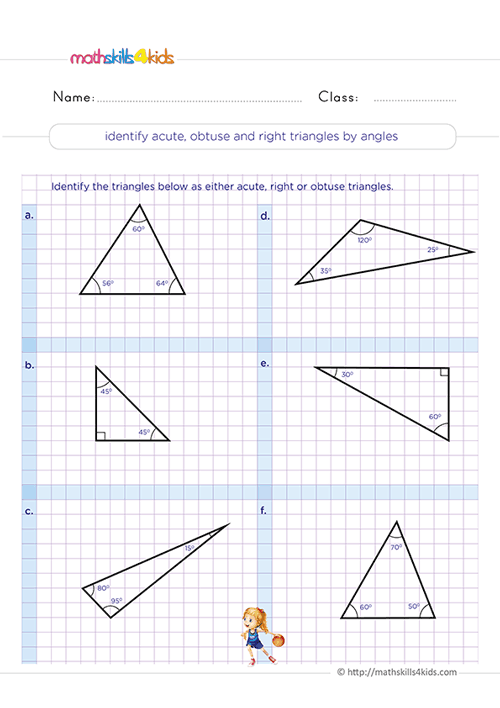 Print it...
Print it...
-
Identifying scalene isosceles and equilateral triangles by sides engths
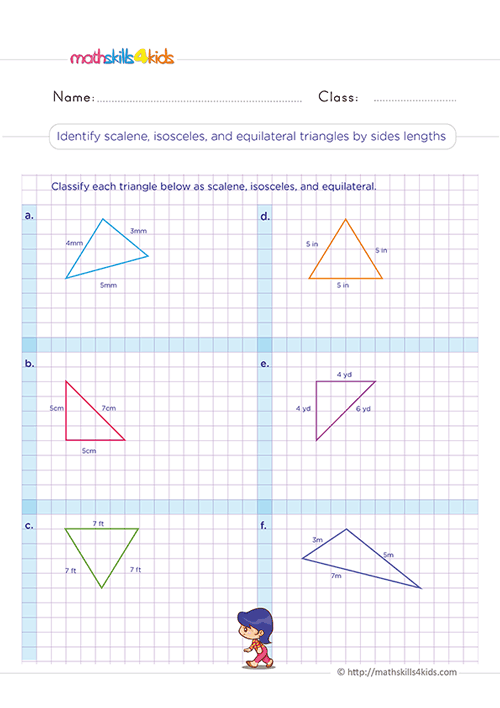 Print it...
Print it...
-
Parallel sides in quadrilaterals
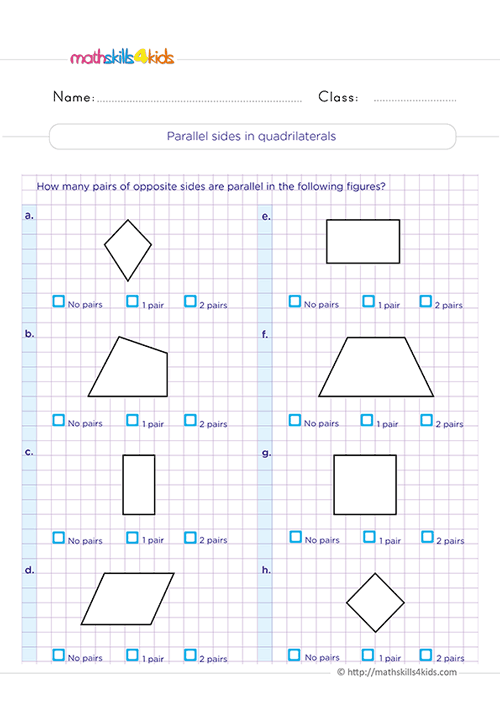 Print it...
Print it...
-
How do you identify parallelograms?
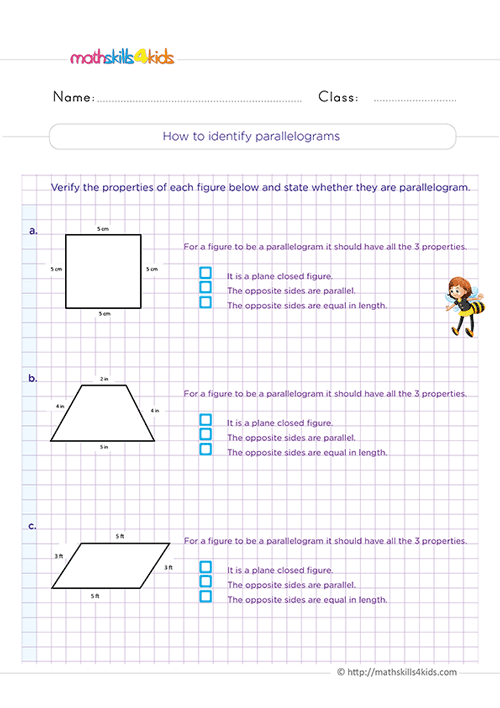 Print it...
Print it...
-
Identifying trapezoids
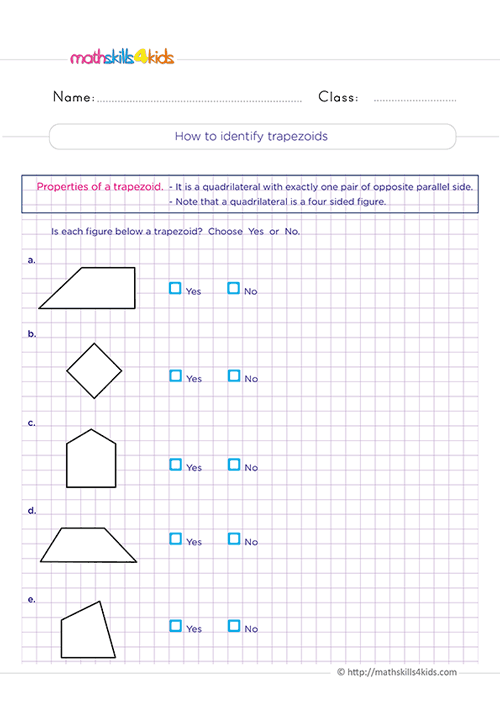 Print it...
Print it...
-
How do you identify rectangles?
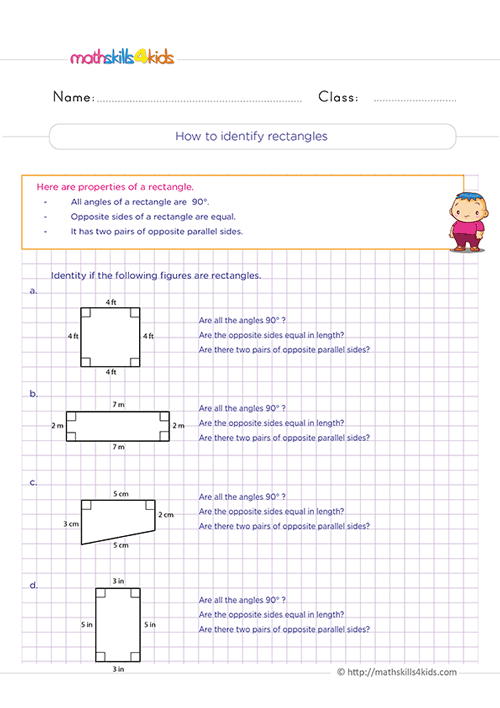 Print it...
Print it...
-
Identifying acute obtuse and right triangle by angles
-
Buying is supporting us!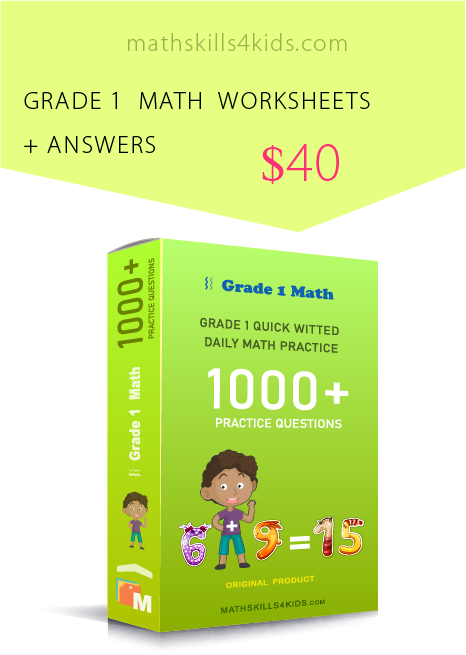
Buy Now...
-
-
How to identify different types of triangles and quadrilaterals: The best guide from Mathskills4kids.com examples
As we know, many triangles and quadrilaterals depend on their sides and angles. With this in mind, you must be wondering how to identify these triangles and quadrilaterals easily. Border no more! Mathskills4kids.com will provide the best guide with examples to help your 3rd Grade students learn to identify accurately and quickly.
Triangles
- Equilateral triangle: A triangle with three equal sides and three equal angles of 60 degrees each. Example: A slice of pizza.
- Isosceles triangle: A triangle with two equal sides and two equal angles opposite them. Example: The roof of a house.
- Scalene triangle: A triangle with no equal sides and no equal angles. Example: A guitar pick.
- Right triangle: A triangle with one right angle of 90 degrees. Example: A corner of a book.
- Acute triangle: A triangle with all angles less than 90 degrees. Example: A slice of pie.
- Obtuse triangle: A triangle with one angle of more than 90 degrees. Example: A sail of a boat.
Quadrilaterals
- Square: A quadrilateral with four equal sides and four right angles. Example: A chessboard.
- Rectangle: A quadrilateral with two pairs of equal sides and four right angles. Example: A sheet of paper.
- Rhombus: A quadrilateral with four equal sides and opposite angles equal. Example: A diamond shape.
- Parallelogram: A quadrilateral with two pairs of parallel sides and opposite angles equal. Example: A tilted square.
- Trapezoid: A quadrilateral with one pair of parallel sides. Example: A trapeze.
- Kite: A quadrilateral with two pairs of adjacent sides equal and one pair of opposite angles equal. Example: A kite.
-
Fun facts about triangles and quadrilaterals: Did you know?
In this article, you will realize many fun facts about triangles and quadrilaterals that your 3rd graders will enjoy while learning. Some of these fantastic properties and facts include:
- The sum of the angles in any triangle is always 180 degrees, no matter what type of triangle it is. This is called the angle sum property of triangles.
- The sum of the angles in any quadrilateral is always 360 degrees, regardless of type. This is called the angle sum property of quadrilaterals.
- There is a special type of triangle called an equiangular triangle, which has three equal angles of 60 degrees each. This is also an equilateral triangle because all equiangular triangles are equilateral triangles.
- A special type of quadrilateral called a square has four equal sides and four right angles. This is also a rectangle, a rhombus, and a parallelogram because all squares are rectangles, rhombuses, and parallelograms.
- Pythagoras’ theorem is a theorem that states that in any right triangle, the square of the longest side (called the hypotenuse) equals the sum of the squares of the other two sides (called the legs). This is a very useful theorem for finding missing lengths in right triangles.
- There is a formula called the area formula, which tells you how to find the area of any triangle or quadrilateral. The area is the amount of space inside the shape. The formula differs for different triangles and quadrilaterals, but it usually involves multiplying some lengths and dividing by 2.
-
Classifying triangles by sides and angles: A part of Grade 3 free printable worksheets
One way to classify triangles is by their sides. There are three types of triangles based on their sides: equilateral, isosceles, and scalene.
Another way to classify triangles is by their angles. There are four types of triangles based on their angles: right, acute, obtuse, and equiangular.
Also, our triangle or quadrilateral: Grade 3 free printable worksheets include a part where you can teach your 3rd graders to combine these two (sides and angles) ways to classify triangles. For example, they can have a right isosceles triangle with one right angle and two equal sides. Or they can have an acute scalene triangle with all angles less than 90 degrees and no equal sides.
Here is a table that shows all the possible combinations of triangles by sides and angles:
Sides
Angles
Example
Equilateral
Equiangular
A slice of pizza
Isosceles
Right
The roof of a house
Isosceles
Acute
A bow tie
Isosceles
Obtuse
A slice of cheese
Scalene
Right
A corner of a book
Scalene
Acute
A guitar pick
Scalene
Obtuse
A sail of a boat
-
How to draw triangles and quadrilaterals: A step-by-step tutorial with tips and tricks
Drawing triangles and quadrilaterals can be easy and fun with simple steps and tips. However, we will provide a step-by-step tutorial with tips and tricks that you can use to teach your Grade 3 students how to draw triangles and quadrilaterals easily and accurately. Let’s get started:
How to Draw an Equilateral Triangle
- Draw a straight line with a ruler. This will be one side of the triangle.
- Use a protractor to measure 60 degrees from one end of the line. Mark the point where the protractor meets the line.
- Draw another straight line from that point to the other end of the first line. This will be another side of the triangle.
- Use the protractor again to measure 60 degrees from the other end of the first line. Mark the point where the protractor meets the second line.
- Draw another straight line from that point to the end of the second line. This will be the third side of the triangle.
- You have drawn an equilateral triangle!
Tip: Your 3rd graders can also use a compass to draw an equilateral triangle. Teach them to draw a circle with any radius and then draw three points on the circle that are equally spaced apart. Ask them to connect these points with straight lines, and they’ll have an equilateral triangle!
How to draw a square
- Draw a straight line with a ruler. This will be on one side of the square.
- Use a protractor to measure 90 degrees from one end of the line. Mark the point where the protractor meets the line.
- Draw another straight line from that point, the same length as the first line. This will be another side of the square.
- Use the protractor again to measure 90 degrees from the other end of the first line. Mark the point where the protractor meets the second line.
- Draw another straight line from that point, the same length as the first line. This will be another side of the square.
- Use the protractor again to measure 90 degrees from the other end of the second line. Mark the point where the protractor meets the third line.
- Draw another straight line from that point, the same length as the first line. This will be the fourth side of the square.
- You have drawn a square!
Tip: Your 3rd graders can also use a compass to draw a square. Ask them to draw a circle with any radius and then draw four points on the circle that are equally spaced apart. Connect these points with straight lines, and they’ll have a square!
-
How to use triangles and quadrilaterals in real life: Some cool applications and projects
3rd Grade students might think that triangles and quadrilaterals are just shapes they learn in math class, but they are beneficial in real life too! Here are some examples of using these shapes in everyday situations and activities.
- Triangles are often used to make strong structures, such as bridges, roofs, towers, and tents. This is because triangles have a property called rigidity, meaning they do not change shape when you apply force. Ask your students if they can find some examples of triangles in the buildings or objects around you.
- Quadrilaterals are also used to make many things, such as boxes, books, windows, doors, screens, and tiles. This is because quadrilaterals can easily fit together and cover much space. Ask your children if they can think of other things made of quadrilaterals.
- You can also encourage your 3rd graders to use triangles and quadrilaterals to create beautiful patterns and designs, such as quilts, mosaics, origami, and art. They can use different colors, sizes, and orientations of these shapes to make interesting and unique combinations. Ask them: “What kind of patterns or designs can you make with triangles and quadrilaterals”?
- Another way to use triangles and quadrilaterals is to measure angles and distances. For example, your kids can use a right triangle (a triangle with one 90-degree angle) and a protractor tool to measure any angle.
- They can also use a formula called the Pythagorean theorem to find the length of any side of a right triangle if they know the lengths of the other two sides. They can use a quadrilateral called a rectangle (a quadrilateral with four right angles) and a tool called a ruler to measure the length and width of any object.
- They can also use the area formula to find the amount of space inside any rectangle if they know its length and width. Ask them: “How can you use these tools and formulas to measure things in your home or school?”
More resources and ideas for learning about triangles and quadrilaterals
If you are looking for more resources and ideas for learning about triangles and quadrilaterals in third grade, you are in the right place. Here are some websites that you can visit:
- Biglearners: This website has a collection of printable worksheets for Triangles, Quadrilaterals. You can click on the images on each worksheet widget to view, download, or print them. https://www.biglearners.com/worksheets/grade-3/math/geometry-patterns/triangles-quadrilaterals-circles.
- Splashlearn: This website has designed interesting quadrilateral games for 3rd graders to help them learn shapes, sides, parallel lines, and more. They will also learn how to construct geometrical shapes with the correct angles and sides. https://www.splashlearn.com/math/identify-quadrilaterals-games-for-3rd-graders.
Thank you for sharing the links of MathSkills4Kids.com with your loved ones. Your choice is greatly appreciated.
-
Conclusion: Keep Practicing and Have Fun
You will bear with me that triangles and quadrilaterals are fun and useful in real life. Your 3rd graders can use them to make strong structures, beautiful patterns, and accurate measurements.
After mastering this concept, your 3rd Grade students will be able to explore more types of triangles and quadrilaterals, such as isosceles triangles, scalene triangles, equilateral triangles, parallelograms, rhombuses, squares, trapezoids, and kites.
How many of these shapes can they recognize and name? How many of them can they draw and classify? Try Mathskills4kids’ Grade 3 free printable triangles and quadrilaterals worksheets to help your kids practice their skills and have fun while learning.
